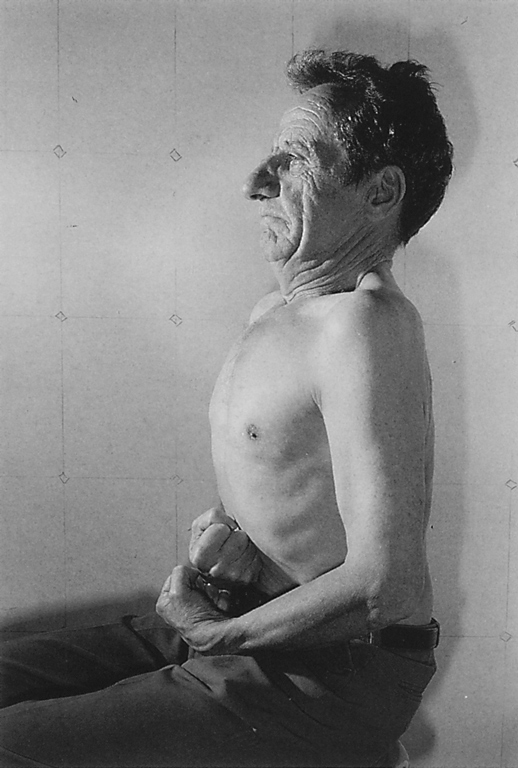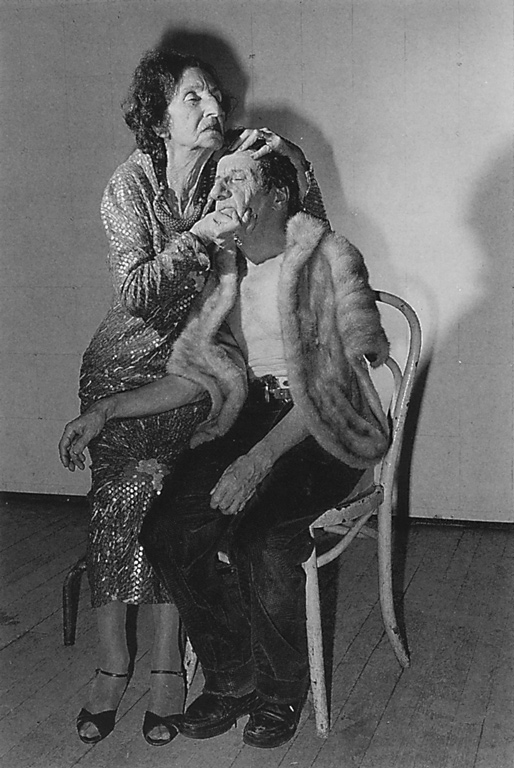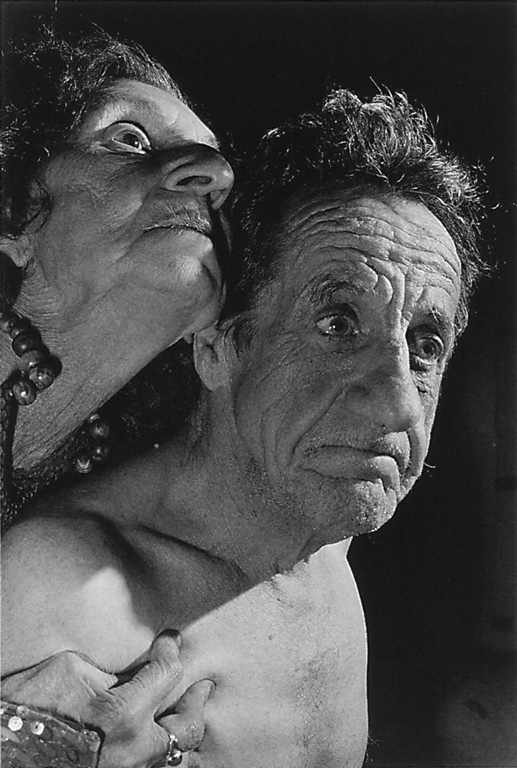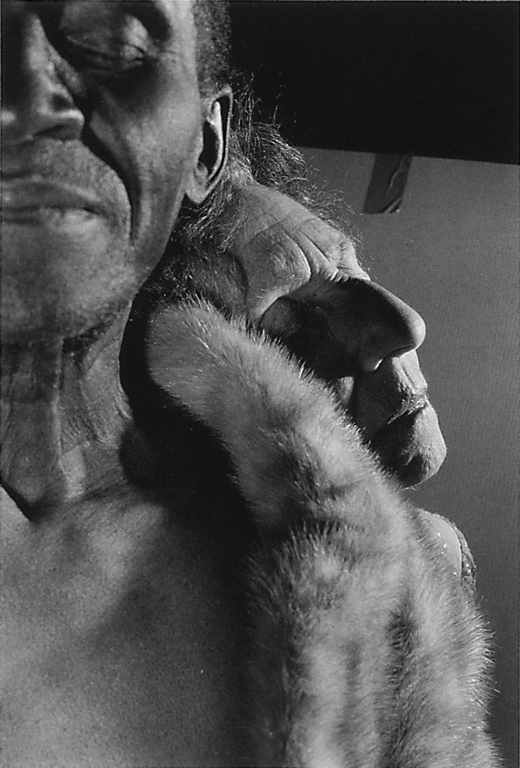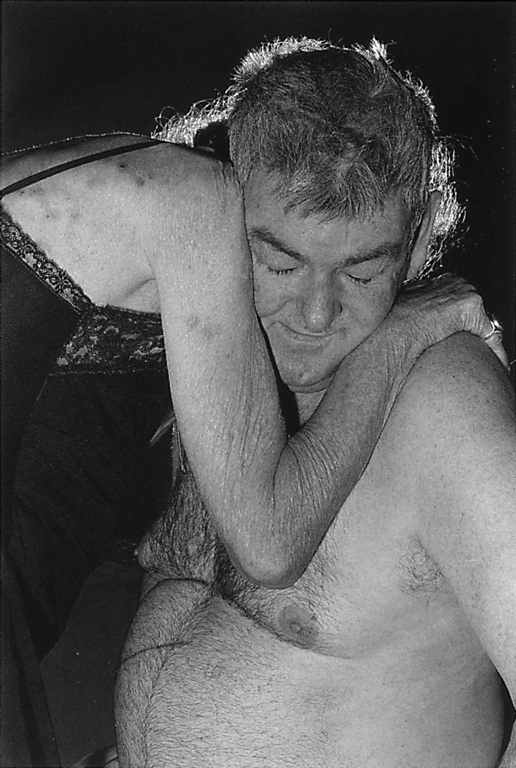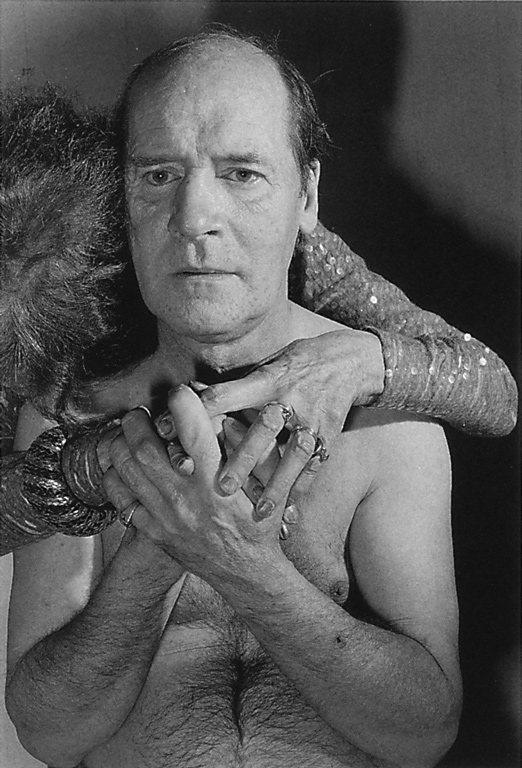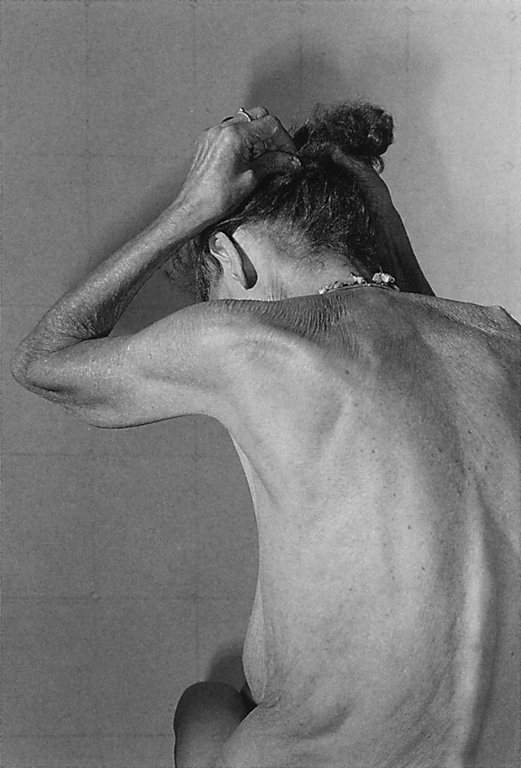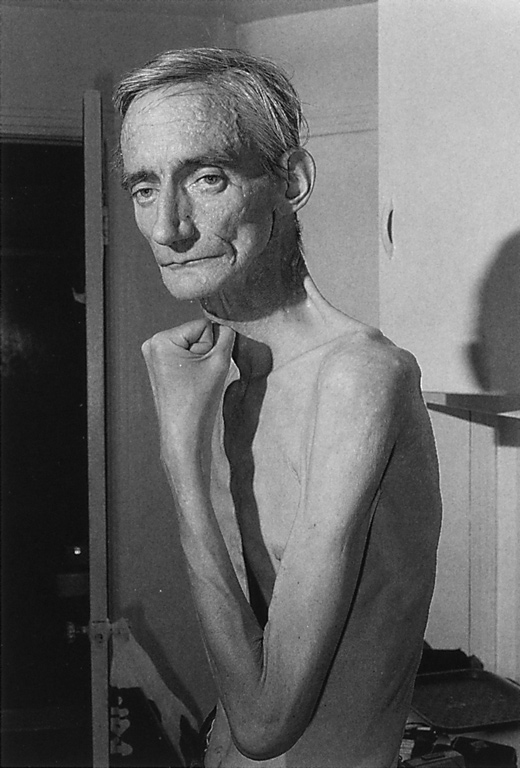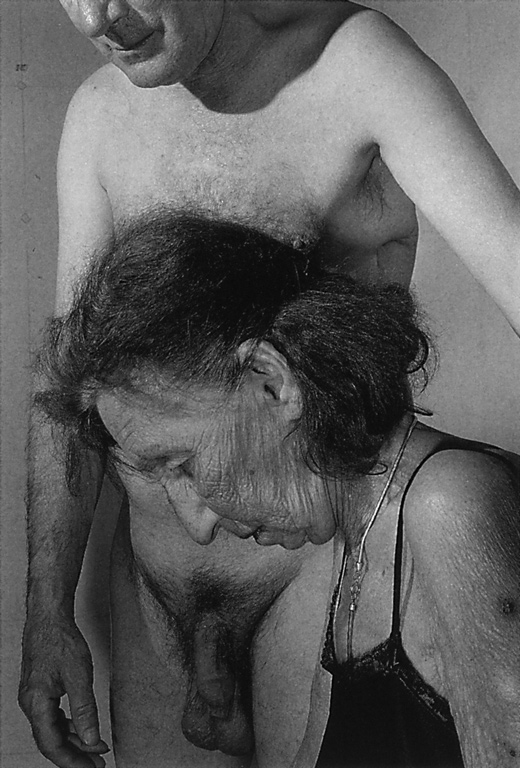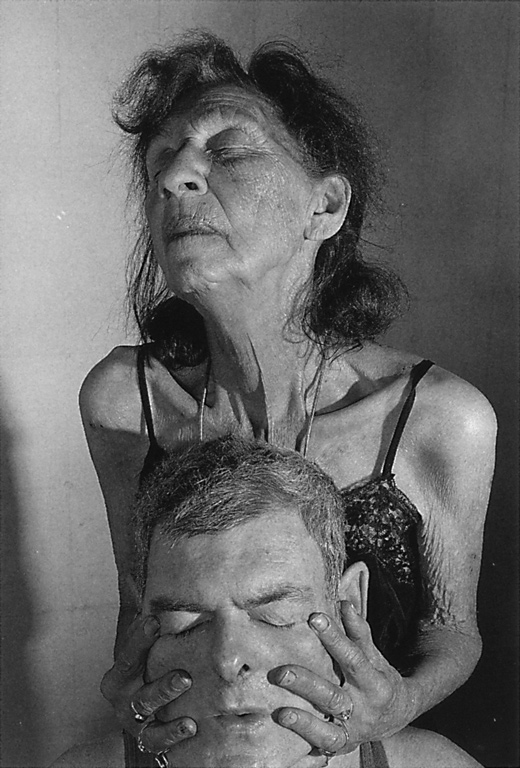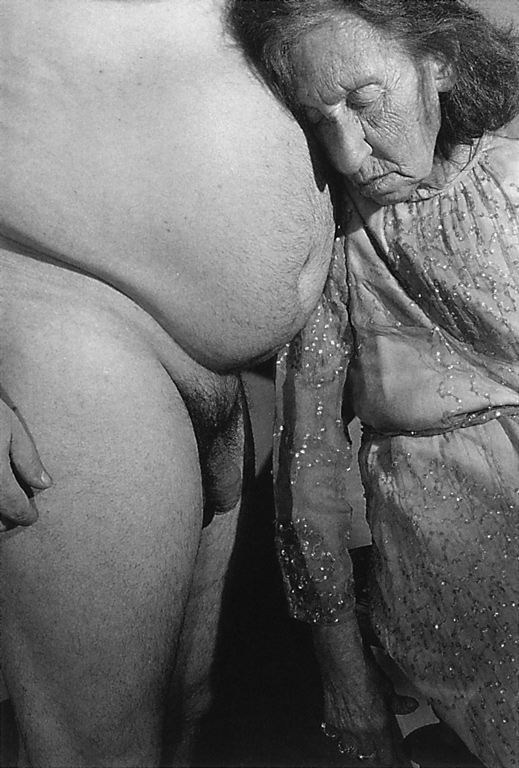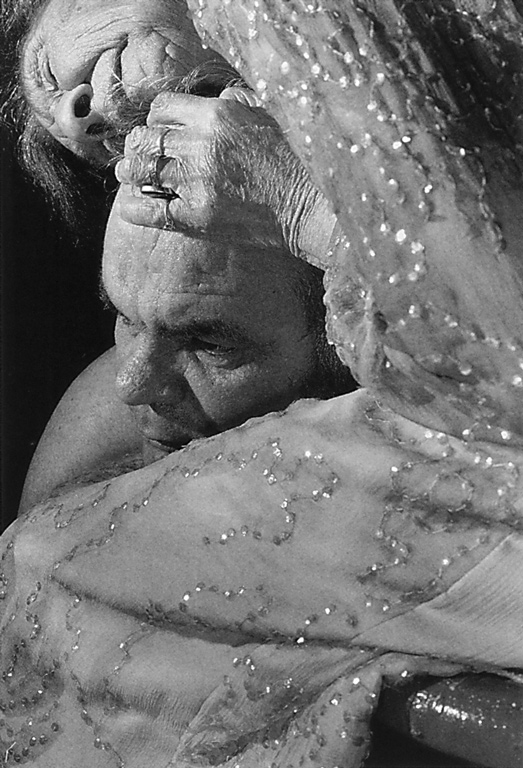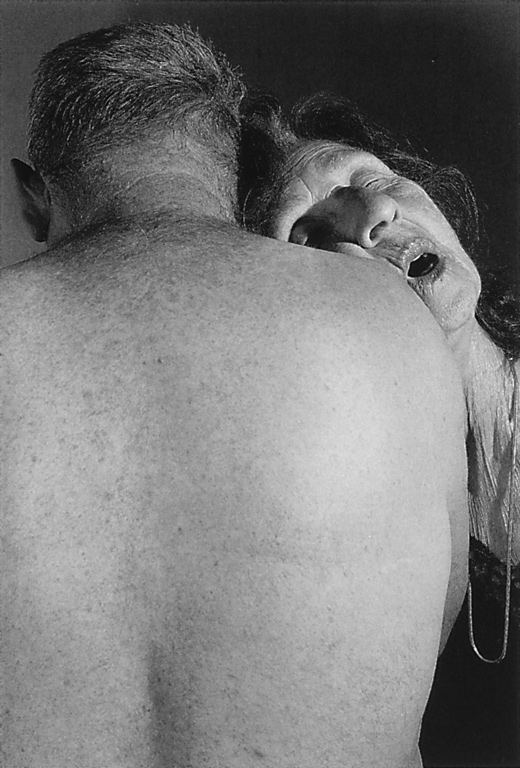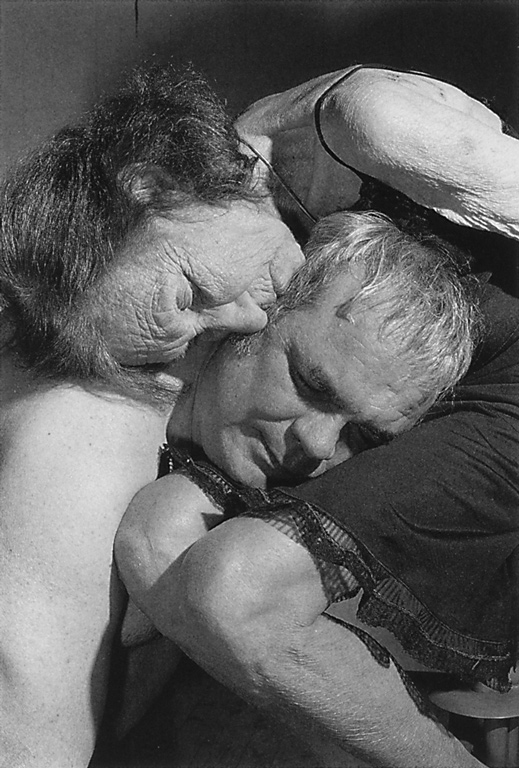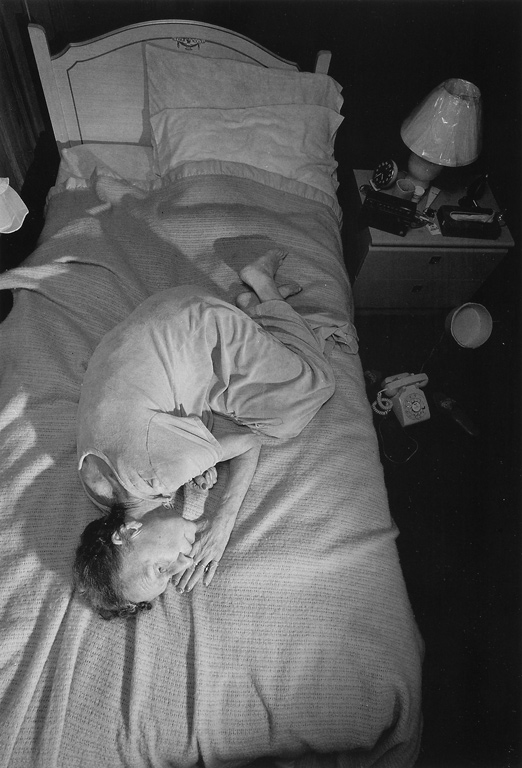[Summer 1994]
by Nicole Gingras
Harry’s Diary is at the heart of Donigan Cumming’s most recent work. Pretty Ribbons, a series he developed for over ten years.
Marking an out step from all that this photographer has produced to date, Harry’s Diary stands out by its facture, its quasi amorous manner ol depicting its subjects and by the starkness of each of its photograph’s dramatic climax.
Eighteen photographs are aligned on a wall covered with excerpts from Harry Strong’s diary. The words are reproduced in printed characters on ordinary paper. Harry is a friend of the photographer who died of cancer of the pancreas at age 55. He left his diary to Donigan Cumming who edited certain passages tor the purpose of this series. Only one female character figures in these series; she is Nettie Harris and she glows. At once muse and chameleon, sphinx and phoenix, Nettie Harris is a reservoir of memories and images, of experiences and traumas, of suppressed and transgressed fears. The space is turned into an immense white room in which fleeting moments are developed, suggested, invented and remembered by bodies, by couples that form and break. Because this is the story of Harry’s world of deceptive love and renewed betrayals.
One woman is in turn associated with five different male protagonists; together represent ten couples who partake in staged relationships that are revived rather than repeated. And with each revival we find uniqueness and difference. Reduced to their simplest form, these poses are highly evocative. A succession of expressions of the body at rest, they rely on the gestural language of bodies in proximity to one another. One may detect different forms of complicity and closeness between Nettie Harris and her transient partners: physical resemblances such as those existing between a brother and sister, sexual tension, the fragility of a body in sickness, profound lassitude or total licentiousness between man and woman.
“Photography proposes to make us resemble our own selves without any criteria with which to judge this resemblance, to the point that, resemblance is to resemble nothing at all, or that we should all resemble each other.” 1
Places and memories are revisited as poses or gestures are resumed. Traces are inscribed even deeper, they are re-engraved to better endow the both. The strength of the images sustained bv Nettie Harris’ presence make it difficult to disassociate the model from the woman close to eighty years of age. Between life and the stage exists an entire world of delusions and fantasies which at times we wish to be true and at others, we would like to be imaginary.
“Iam already but a fine film veiling an assortment of memories. I can no longer endure. What would become of me should the skin rupture?”2
We are drawn to the gallery’s walls, to the intimacy of the documents that paper them. Our gaze superimposes itself onto the invisible voices diffusing the very same words we are reading. This overlapping of sound and vision illustrates Cumming’s proclivity to interrelate the two faculties. It also reveals the complexity of a device that hesitates between evanescence and corporality. There is something at once disquieting and moving in these bodiless voices which obliquely recall the division caused by the inevitable separation between the model and her image, between the stage/the real and the staging. By integrating his voice into the sound track, dimming creates yet another shift He mixes his own voice with the voices of the man reading excerpts from Harry Strong’s diary and Nettie Harris reciting one of her poems. Just as the models and characters of his imposing fresco, dimming is at once himself and another in this impressive cycle of romantic investigation.
From one image to another, from one passage of the diary to the next, we sense the photographer’s and models’ shared desires and needs: to concentrate on the marks borne bv the bodies and to search for the everyday occurrences that help render each existence unique. Donigan Cumming’s work clearly manifests his fascination for oral transmission. He knows all too well the charm of an anecdotal setting, its irresistible impact on the imaginary. A complex network of effects and impressions is engaged, and we are invited to reflect upon how emotions become memory, how the passing of time inspires us to reconsider the fragility and vulnerability of experience. The images are read as varying components of a reality and the succession of words are repeated. Together, they form a loop originating with the endless text which, doubled, sustains the photographic series’ mirror effect. Cumming’s characters impose themselves upon us as they expose themselves to us.
Both voice and body leave traces. They set astir the inertia that often impregnates the images. The voice speaks of the body, it is the body’s memory. Nettie Harris lends her body, her voice and her story to the story of Harry Strong. Nettie Harris an ambivalent figure, difficult to pin down. She is forever present, never the same and always herself in the way she nurtures the rapport of seduction and fascination. The photographer and his model seem to grow closer, surprisingly near. What they have given us to see are images informed by their presence, by their regard and their vision.
Under the ascendance of Nettie Harris’ magnetism and the accounts of Harry Strong, Harry’s Diary, with its intimate setting, touches upon the daily dramas that make up our very existence. In this flux of images and words, photography and sound become fictional components. Characters appear and disappear. Their passage taints the images we are looking at, and their presence discloses the weight of body on memory and the void of disappearance.
1 SALLENAVE, Danièle, “Le corps imaginaire de la photographie”, Le Corps et ses fictions, Paris, Éditoins de Minuit, 1983, p. 93.
2 Hausshofer, Marlene, Le mur invisible, Paris, Éditoins Actes Sud, Coll. Babel, 1992, p. 244
Donigan Cumming is a Montreal photographer. His work has been exhibited in museums and galleries across Canada, in the United-States and in Europe. Along with his solo presentations, he has participated in photography biennials and thematic group exhibitions.
Nicole Gingras curated the exhibition Donigan Cumming — Diverting the Image/Détournements de l’image, presented at the Art Gallery of Windsor. Ontario and included in the exhibition Les Cent Jours d’art contemporain de Montréal. She directed Les Images des autres, a film about four photographers, and has written essays on photography, film and video. Nicole Gingras is currently working on a second compilation of essays discussing the relations between photography and film.


